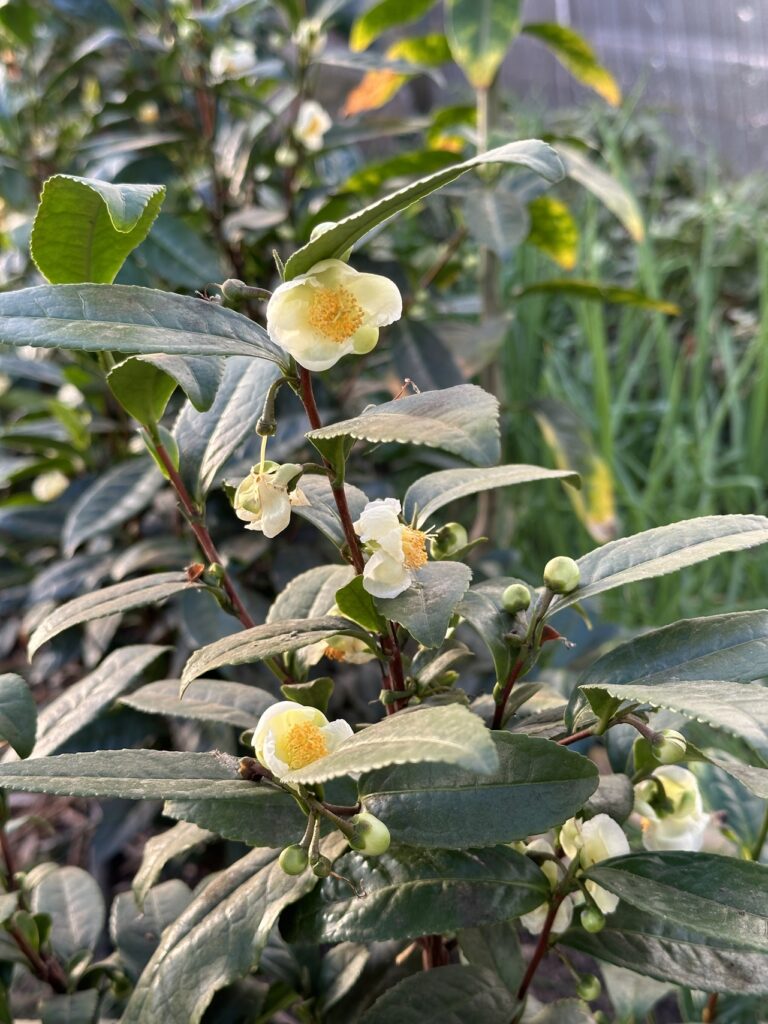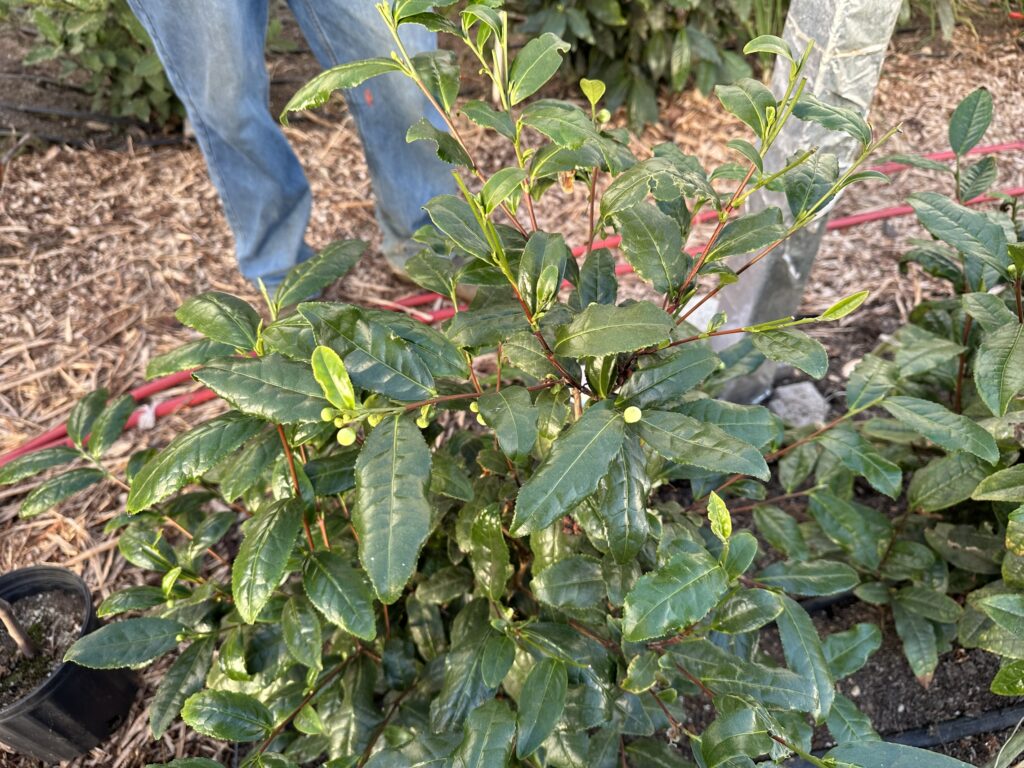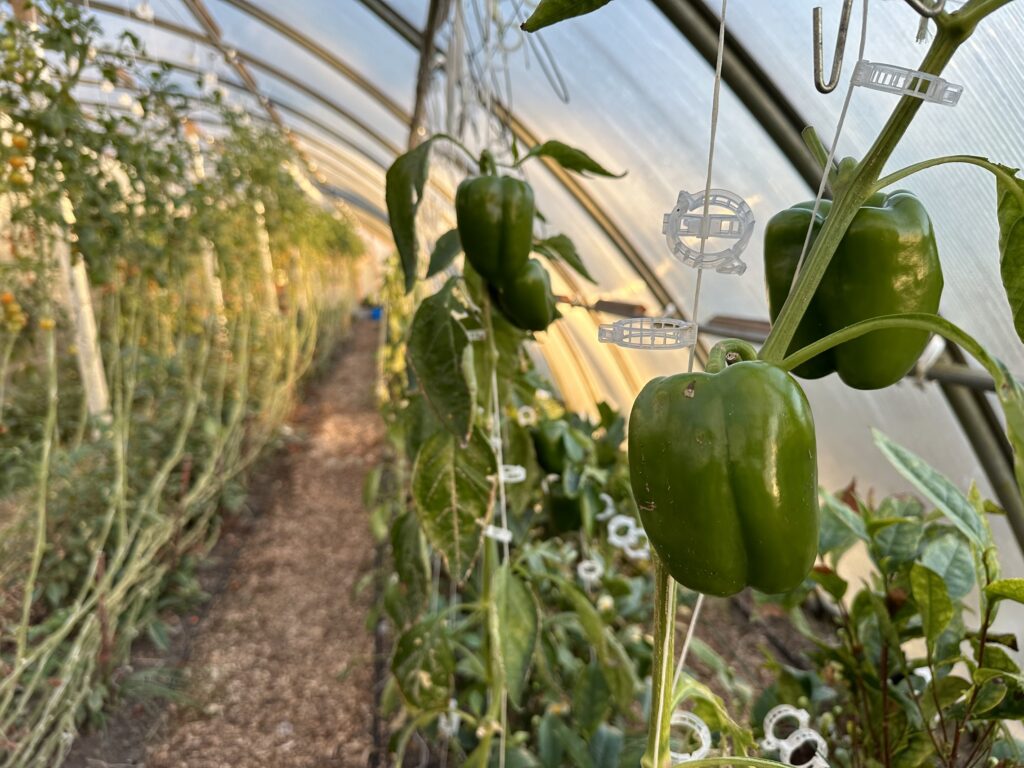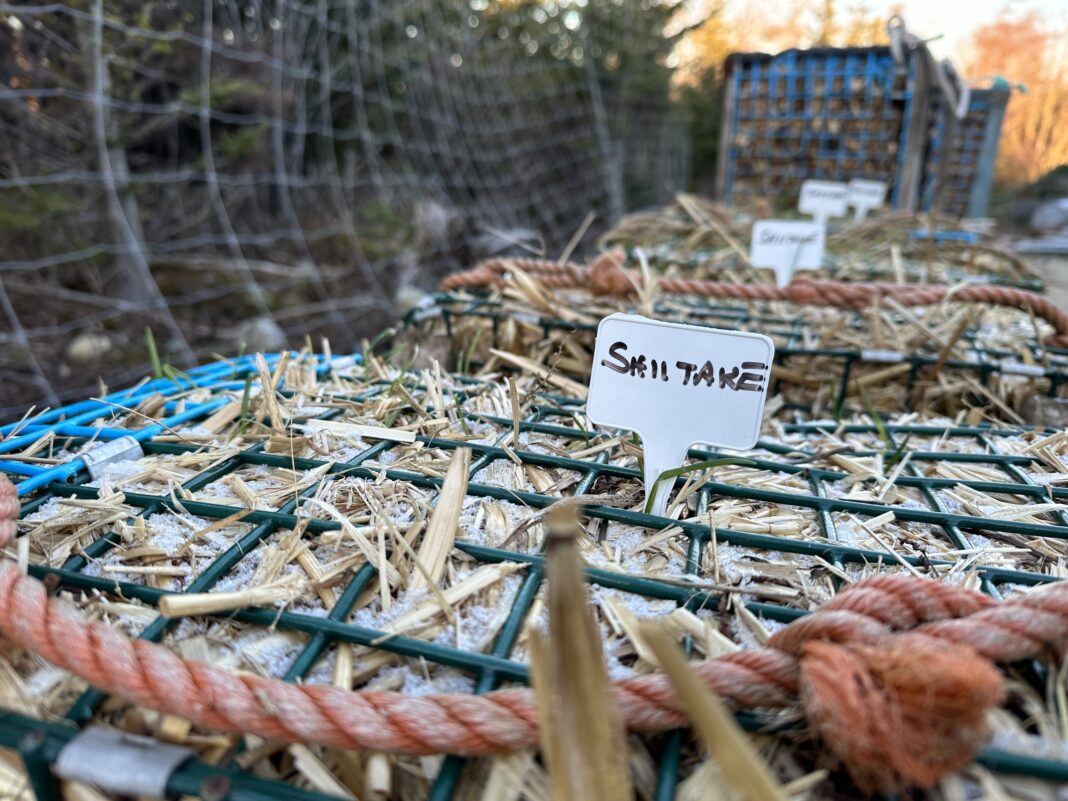A warming climate and creative greenhouse use has allowed a Nova Scotia farmer to grow crops not normally associated with Canadian temperatures.
Seven varieties of tea, each rated for different levels of hardiness, grow inside and outside of an innovative greenhouse at Coastal Grove Farm in Port La Tour, Nova Scotia. Farmer Matt Roy built the greenhouse, which is powered by geothermal heat collected from beneath the structure itself. Roy is testing these varieties to see how well they grow in this northern climate. He’s even growing the bergamot to flavor Earl Grey. He and his spouse, Cynthia Bazinet, will start selling green and black tea by 2025. So far, all seven varieties are thriving in the mild, coastal climate that’s becoming milder every year.
Camellia sinensis, aka the black tea usually associated with India, China and Sri Lanka, is a local food on this East Coast farm. And not just tea! Roy is also growing saffron, the delicate golden spice that’s like sunshine in a jar, made from the stigmas of crocus flowers. As the planet warms, Coastal Grove Farm is proving that tea and saffron are among the crops that can be grown successfully in northern regions like Canada.



Roy is three years into his tea-growing project and is already selling saffron harvested from one million plants. The 56-year-old’s career in agriculture spans twenty-five years, mostly spent in Massachusetts and New Hampshire. He’s trained in ecological agriculture, has earned certification in permaculture (sustainable practices that build self-sufficient ecosystems on the farm), and built this certified organic farm on the southernmost tip of Nova Scotia from scratch in just three years. Already, he’s installed the underground piping required to capture geothermal heat for a second greenhouse, which will enable him to double his growing space for tea and other crops.
If tea can be grown locally, Roy says, then the possibilities for locally grown food suddenly expands, and he’s proving it. Saffron is a good example of how adapting to climate change and taking advantage of local conditions can lead to more sustainable farming practices. Roy fertilizes those one million crocus plants with the seaweed that washes up on the shore next to the field where they grow.
These are relatively minor crops when it comes to feeding the world’s human population, but larger solutions lie hidden in Roy’s farming practices. Different crops require different levels of lighting, so tea shrubs grow as an understory in his greenhouse beneath cherry tomato vines, which grow tall as they reach for direct sun. The vines stretch twenty feet (six meters) along the ground before climbing another ten feet (three meters) on a pulley and line system to the roof. These plants are in their eighth month of producing fruit, an exceptionally long run for tomatoes. Beside them, the tallest pepper plants this writer has ever seen hang with fat green peppers. Peppers are normally an annual crop, but these are two years old. Close to the ground next to the back wall, jalapeno pepper plants are still producing continuously into their third year. Parsley, lemongrass, lettuce and other small crops grow in the spaces between larger plants, where they thrive in the shade those plants offer.
Outside, Roy has filled about a dozen old lobster traps that washed up on nearby shores with hay bails he loads with mushroom spores. When he’s ready to kickstart the shiitakes, wine caps, and Italian oysters, he’ll move the traps into the warm greenhouse. When the mushrooms have used up all the nutrients in the organic matter in the traps, Roy will spread it as mulch around his crops. The mushrooms and almost everything else Roy grows is sold within a few dozen kilometers of the farm. He supplies fresh, organic food to a local supermarket, a farm market, and to folks who just drop by.


Even as Roy takes advantage of the longer growing seasons and milder winter conditions brought on by climate change, he is also faced with the worst that these changes bring. In June 2023, the largest forest fire in Nova Scotia history threatened to spread all the way to the coast, endangering his farm and home, but stopped short of his property. He’s also had to build his farm with an awareness of the prospect of stronger and more frequent storms, particularly hurricanes that track directly north from the Caribbean over the warming ocean waters, as well as winter Nor'easters, as they’re known locally. Roy’s greenhouse is built in the shape of an airplane wing so the winds glide over it. The back wall is angled at ten degrees to increase its wind resistance. The roof is made of rigid polycarbonate panels rather than flimsy plastic or breakable glass.
Just one other tea farm — The Westholme Tea Company — exists in all of Canada, and that plantation is nearly 6,000 kilometers away in British Columbia. Still, for the first time, Canadians will be able to brew tea grown in their own country rather than shipped halfway around the planet. They’ll be flavoring dishes such as paella with local saffron. And if Roy’s growing techniques catch on, much more food can be grown locally and year round in northern climates than previously imagined.



